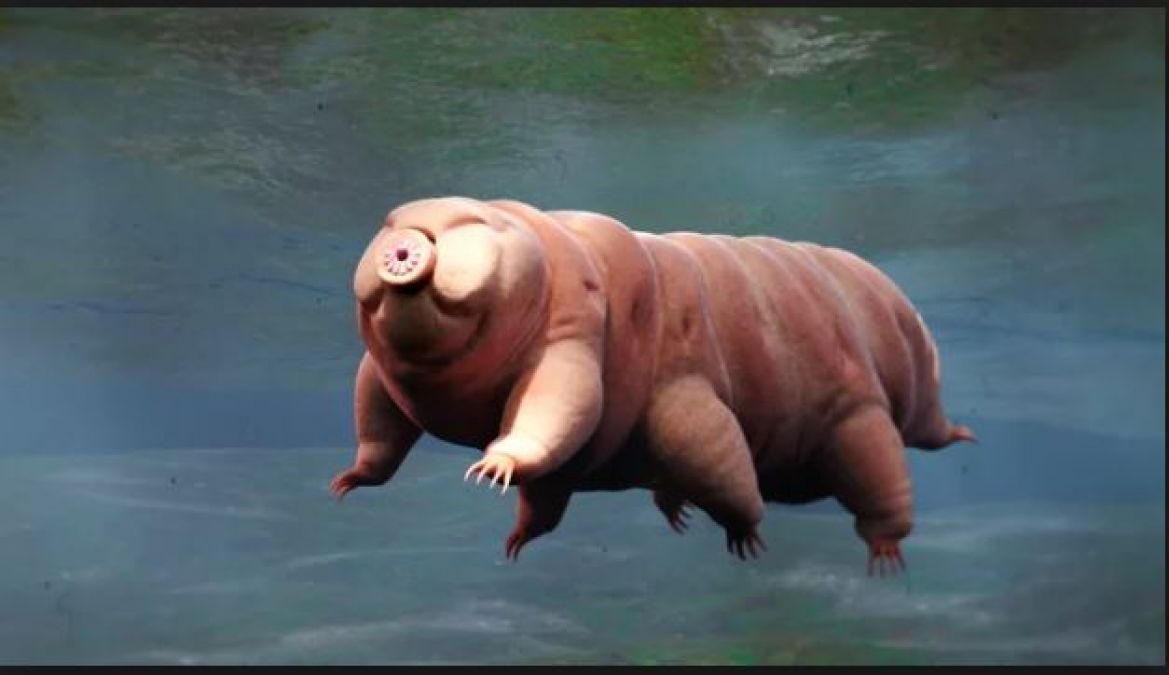Tardigrades, often called water bears or moss piglets, are near-microscopic animals with long, plump bodies and scrunched-up heads. They have eight legs, and hands with four to eight claws on each. While strangely cute, these tiny animals are almost indestructible and can even survive in outer space.
- More than a 1,150 species of Tardigrades have been identified so far since 1778.
- Scientists classify these micro-animals as extremophiles because they are capable of surviving in extreme conditions. Even less than 10% of such conditions are considered hostile and deadly for humans.
- Tardigrades are usually 0.5 mm long but they can grow a little longer and reach up to 1 mm.
also read: Amazing Facts: Crazy Facts about women
- Tardigrade babies are all born with a full range of adult cells. They grow not by cell division. Their cell simply expand in size.
- Tardigrades have existed for a very very long time. They have actually outlived the dinosaurs. Tardigrades have been around for 530 million years. Well, that’s what the fossil records say.Tardigrades are small, really tiny, actually micro animals with segmented bodies. They are usually water-dwelling creatures but can be found in a myriad of places like Antarctic ice, deep in ocean beds to a depth of 14,000 ft, high up in Himalayas at a height of 20,000 ft, tree barks, moss and more!
- They have 8 legs (4 pairs) and each leg has 4 to 8 claws that resemble the claws of a bear. This is why they have earned the name ‘Water Bear’ but they are also known by the name ‘Moss Piglet’ because they are also found in moss.
- Tardigrades were discovered for the first time in 1773 by a German pastor by the name Johan August Ephraim Goeze. In 1776, the animal received the name Tardigrada by an Italian biologist named Lazzaro Spallanzani.
- Most of the Tardigrade species are oviparous. In simple layman language, females lay egg inside their shed cuticle and then males cover those eggs with their sperm. Only a very few among the known Tardigrade species are not oviparous and females in those species have internal fertilization.
- Scientists have also frozen them to temperature of -200 degrees Celsius or -328 degrees Fahrenheit which they have happily survived for days! They were taken further down to a temperature of -272 degrees Celsius (which is just one degree above absolute zero) and they have managed to survive for a few minutes!
- These Tardigrades are way tougher that what scientists found in temperature fluctuation experiments. Tardigrades can live for a decade (10 years) without food and water! They even found one in a 120-year old dried moss which reported a leg movement!
- Tardigrades have sharp dagger-like teeth in their tubular mouth that they use to spear other living organisms and algae. They are usually feed on bacteria or plant cells (known as bacteriophagous and phytophagous respectively) but there are a few other species that are predatory by nature and feed on other smaller animals.
- Tardigrades can survive extreme heat. Scientists have put them at scorching 151 degrees Celsius or 304 degrees Fahrenheit and found that they can survive for a few minutes.
- In extreme cold conditions, these Tardigrades manage to drop the water content of their body from 85% to 3%. This is one of their survival strategies because when frozen, water expands. If the Tardigrades don’t dehydrate themselves in extreme cold conditions, the water in their body will expand and will tear them apart. They prevent this from happening by dehydrating themselves. In this state they make use of a type of sugar known as trehalose that prevents any kind of membrane damage in these extraordinary animals.
- These guys are even capable of surviving extreme pressure. Most of the species can withstand 1,200 times the normal atmospheric pressure however, there are some species that can withstand 6,000 times atmospheric pressure. That’s 6 times the pressure water puts at the bottom of Mariana Trench
- Still not happy? Okay, put them to high toxic environmental conditions and they will survive for years by entering a state known as chemobiosis.
- They can survive in the most hostile environment known to human – the space! They can survive for 10 days straight. In an experiment conducted in 2007, Tardigrades were actually taken to space in dehydrated state and they were exposed to outer space’s perfect vacuum and extreme solar UV radiations and left there for 10 days. They were brought back on earth and rehydrated. Within 30 minutes they were back to life. After returning from such extreme conditions, they were found to produce perfectly healthy and viable embryos!
- These extraordinary capabilities of Tardigrades come from their ability to reversibly halt all their metabolic activities completely. This is know as cryptobiosis and when a Tardigrade gets into a cryptobiotic state, it is known as ‘tun’.
- In case you are not satisfied yet, expose them to extreme radiations and they will come out victorious. Scientists have found out that the lethal dose of Gamma Rays to kill Tardigrades is 5,000 Gy while the lethal dose of heavy ions is 6,200 Gy. For humans, 5-10 Gy is lethal.
- Scientists have found out that Tardigrades are capable of repairing their DNA pretty efficiently after the damage caused by radiations. And they also found that whether these animals are exposed to such radiation in a dehydrated or hydrated state, they are pretty resilient, with dehydrated state being far more invincible!
also read: Amazing Facts: Surprising lizard facts
